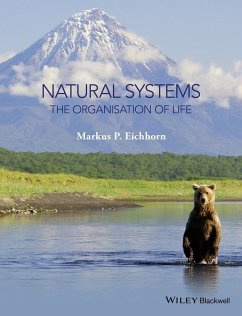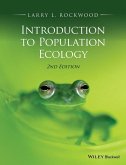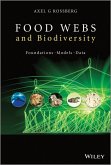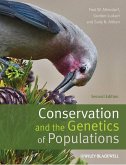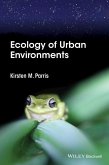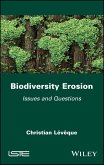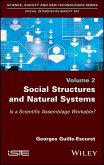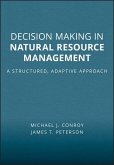50,99 €
50,99 €
inkl. MwSt.
Sofort per Download lieferbar

0 °P sammeln
50,99 €
Als Download kaufen

50,99 €
inkl. MwSt.
Sofort per Download lieferbar

0 °P sammeln
Jetzt verschenken
Alle Infos zum eBook verschenken
50,99 €
inkl. MwSt.
Sofort per Download lieferbar
Alle Infos zum eBook verschenken

0 °P sammeln
- Format: ePub
- Merkliste
- Auf die Merkliste
- Bewerten Bewerten
- Teilen
- Produkt teilen
- Produkterinnerung
- Produkterinnerung

Bitte loggen Sie sich zunächst in Ihr Kundenkonto ein oder registrieren Sie sich bei
bücher.de, um das eBook-Abo tolino select nutzen zu können.
Hier können Sie sich einloggen
Hier können Sie sich einloggen
Sie sind bereits eingeloggt. Klicken Sie auf 2. tolino select Abo, um fortzufahren.

Bitte loggen Sie sich zunächst in Ihr Kundenkonto ein oder registrieren Sie sich bei bücher.de, um das eBook-Abo tolino select nutzen zu können.
Organised into four sections, this text discusses the organisation of the living world. * Links Ecology, Biodiversity and Biogeography * Bridges modern and conventional Ecology * Builds sequentially from the concept and importance of species, through patterns of diversity to help consider global patterns of biogeography * Uses real data sets to help train in essential skills
- Geräte: eReader
- mit Kopierschutz
- eBook Hilfe
- Größe: 28.65MB
Andere Kunden interessierten sich auch für
![Introduction to Population Ecology (eBook, ePUB) Introduction to Population Ecology (eBook, ePUB)]() Larry L. RockwoodIntroduction to Population Ecology (eBook, ePUB)47,99 €
Larry L. RockwoodIntroduction to Population Ecology (eBook, ePUB)47,99 €![Food Webs and Biodiversity (eBook, ePUB) Food Webs and Biodiversity (eBook, ePUB)]() Axel G. RossbergFood Webs and Biodiversity (eBook, ePUB)65,99 €
Axel G. RossbergFood Webs and Biodiversity (eBook, ePUB)65,99 €![Conservation and the Genetics of Populations (eBook, ePUB) Conservation and the Genetics of Populations (eBook, ePUB)]() Fred W. AllendorfConservation and the Genetics of Populations (eBook, ePUB)50,99 €
Fred W. AllendorfConservation and the Genetics of Populations (eBook, ePUB)50,99 €![Ecology of Urban Environments (eBook, ePUB) Ecology of Urban Environments (eBook, ePUB)]() Kirsten M. ParrisEcology of Urban Environments (eBook, ePUB)37,99 €
Kirsten M. ParrisEcology of Urban Environments (eBook, ePUB)37,99 €![Biodiversity Erosion (eBook, ePUB) Biodiversity Erosion (eBook, ePUB)]() Christian LévêqueBiodiversity Erosion (eBook, ePUB)126,99 €
Christian LévêqueBiodiversity Erosion (eBook, ePUB)126,99 €![Social Structures and Natural Systems (eBook, ePUB) Social Structures and Natural Systems (eBook, ePUB)]() Georges Guille-EscuretSocial Structures and Natural Systems (eBook, ePUB)139,99 €
Georges Guille-EscuretSocial Structures and Natural Systems (eBook, ePUB)139,99 €![Decision Making in Natural Resource Management (eBook, ePUB) Decision Making in Natural Resource Management (eBook, ePUB)]() Michael J. ConroyDecision Making in Natural Resource Management (eBook, ePUB)62,99 €
Michael J. ConroyDecision Making in Natural Resource Management (eBook, ePUB)62,99 €-
-
-
Organised into four sections, this text discusses the organisation of the living world. * Links Ecology, Biodiversity and Biogeography * Bridges modern and conventional Ecology * Builds sequentially from the concept and importance of species, through patterns of diversity to help consider global patterns of biogeography * Uses real data sets to help train in essential skills
Dieser Download kann aus rechtlichen Gründen nur mit Rechnungsadresse in A, B, BG, CY, CZ, D, DK, EW, E, FIN, F, GR, HR, H, IRL, I, LT, L, LR, M, NL, PL, P, R, S, SLO, SK ausgeliefert werden.
Produktdetails
- Produktdetails
- Verlag: John Wiley & Sons
- Seitenzahl: 392
- Erscheinungstermin: 29. Februar 2016
- Englisch
- ISBN-13: 9781118905999
- Artikelnr.: 44714642
- Verlag: John Wiley & Sons
- Seitenzahl: 392
- Erscheinungstermin: 29. Februar 2016
- Englisch
- ISBN-13: 9781118905999
- Artikelnr.: 44714642
- Herstellerkennzeichnung Die Herstellerinformationen sind derzeit nicht verfügbar.
Dr Markus Eichhorn, School of Biology, University of Nottingham, UK.
Preface xv
0.0.1 To students xvi
0.0.2 To instructors xvii
Acknowledgments xxi
Abbreviations xxiii
1 Introduction: Defining nature 1
1.1 How little we know 1
1.2 Pressing questions 2
1.3 The hierarchy of nature 3
1.4 Biodiversity 5
1.5 Myths to bust 7
1.6 Further reading 8
1.6.1 Recommended reading 8
PART I SPECIES
2 What is a species? 3
2.1 The big question 3
2.2 Species concepts 6
2.2.1 Nominalistic species concepts 6
2.2.2 Morphological species concepts 7
2.2.3 Biological species concepts 8
2.2.4 Phylogenetic species concepts 10
2.2.5 Genetic species concepts 11
2.3 Solving the riddle 15
2.4 Coda: Species richness 16
2.5 Conclusions 16
2.5.1 Recommended reading 17
2.5.2 Questions for the future 17
3 The history of life 21
3.1 The big question 21
3.2 Sources of evidence 21
3.2.1 The fossil record 21
3.2.2 Molecular evidence 22
3.3 A brief history of diversity 23
3.4 Uneven diversity 29
3.5 Conclusions 31
3.5.1 Recommended reading 32
3.5.2 Questions for the future 32
4 How many species are there? 35
4.1 The big question 35
4.2 How can we not know? 36
4.3 Discovery rates 37
4.4 Scaling 40
4.5 Sampling-based methods 41
4.6 Other organisms 47
4.7 Wrapping up 48
4.8 Conclusions 50
4.8.1 Recommended reading 50
4.8.2 Questions for the future 50
PART II DIVERSITY
5 Measuring diversity 57
5.1 The big question 57
5.2 Scales of diversity 58
5.3 Species richness 58
5.4 Believing in estimates 63
5.5 A SAD story 65
5.6 Diversity of species 67
5.7 Other measures of diversity 71
5.8 diversity 75
5.9 Case study: the Binatang project 76
5.10 Conclusions 80
5.10.1 Recommended reading 80
5.10.2 Questions for the future 80
6 Niches 85
6.1 The big question 85
6.2 Historical background 86
6.3 Back to basics 89
6.4 Birth and death rates 90
6.5 The ZNGI 95
6.6 Impact vectors 98
6.7 Supply points 98
6.8 Coexistence 98
6.9 The evidence 106
6.10 Implications 112
6.11 Conclusions 116
6.11.1 Recommended reading 117
6.11.2 Questions for the future 117
7 Patterns in species richness 121
7.1 The big question 121
7.2 Area 121
7.3 Local and regional species richness 124
7.4 Local patterns in species richness 131
7.5 Congruence 137
7.6 Assembling a model 139
7.7 Conclusions 139
7.7.1 Recommended reading 140
7.7.2 Questions for the future 141
8 Drivers of diversity 147
8.1 The big question 147
8.2 Coexistence or co-occurrence? 148
8.3 Energy and resources 148
8.4 Diversity begets diversity 154
8.4.1 Heterogeneity in space 154
8.4.2 Heterogeneity in time 158
8.5 Disturbance 160
8.6 Top-down control 162
8.7 Expanding our model 168
8.8 Conclusions 169
8.8.1 Recommended reading 169
8.8.2 Questions for the future 169
9 Does diversity matter? 175
9.1 The big question 175
9.2 Ecosystems 176
9.3 What shape is the relationship? 178
9.4 Field experiments 181
9.5 A problem with peas 185
9.6 Other measures of diversity 186
9.7 Multifunctionality 188
9.8 The real world 189
9.9 The link between species richness and productivity 194
9.10 Conclusions 194
9.10.1 Recommended reading 195
9.10.2 Questions for the future 196
PART III COMMUNITIES
10 Organisation at the community scale 203
10.1 The big question 203
10.2 Definitions 204
10.3 Communities in the field 205
10.4 Quantitative approaches 206
10.5 Community structure 210
10.6 Food chains 213
10.7 Food webs 216
10.8 Complexity and stability 221
10.9 Trophic cascades 222
10.10 SAD again 225
10.11 Complex systems 228
10.12 Unified Neutral Theory 231
10.13 Metabolic Theory of Ecology 234
10.14 Conclusions 236
10.14.1 Recommended reading 237
10.14.2 Questions for the future 237
11 Stability 245
11.1 The big question 245
11.2 Stable states 245
11.3 Changing environments 249
11.4 Hysteresis 253
11.5 Predicting changes 256
11.6 Coral reefs 257
11.7 Shifting baselines 259
11.8 Conclusions 263
11.8.1 Recommended reading 264
11.8.2 Questions for the future 265
11.9 Coda: the seduction of Gaia 265
12 Changes through time 273
12.1 The big question 273
12.2 Succession 274
12.3 Succession and niche theory 275
12.4 Examples of succession 279
12.5 Disturbance 281
12.6 Modelling succession 283
12.7 Regeneration 286
12.8 Plants and animals 287
12.9 Case study: Mpala, Kenya 288
12.10 Conclusions 290
12.10.1 Recommended reading 291
12.10.2 Questions for the future 291
13 Changes through space 295
13.1 The big question 295
13.2 Community assembly 296
13.2.1 Competitive exclusion 297
13.2.2 Historical processes 300
13.2.3 Habitat checkerboards 302
13.2.4 Chance & contingency 302
13.3 Metacommunities 304
13.4 Dispersal limitation 313
13.5 Combining environment and dispersal 318
13.6 Conclusions 322
13.6.1 Recommended reading 322
13.6.2 Questions for the future 323
PART IV BIOGEOGRAPHY
14 Global patterns of life 331
14.1 The big question 331
14.2 Biogeography 331
14.3 Phytogeography 336
14.4 Ecoregions 340
14.5 Empirical approaches 341
14.6 The oceans 345
14.7 Fresh water 349
14.8 Conclusions 349
14.8.1 Recommended reading 350
14.8.2 Questions for the future 350
15 Regional species richness 355
15.1 The big question 355
15.2 Climate and productivity 357
15.3 Other processes 360
15.4 Scale and productivity 362
15.5 Latitudinal gradients 367
15.6 Centres of origin 369
15.7 Regional Species-Area Relationships 370
15.8 Confounding effects 371
15.9 Conclusions 373
15.9.1 Recommended reading 373
15.9.2 Questions for the future 374
16 Latitudinal gradients 381
16.1 The big question 381
16.2 Hypotheses 382
16.3 Geographic Area 382
16.4 Climatic stability 385
16.5 Productivity 386
16.6 Niche size 387
16.7 Evolutionary speed 390
16.8 Out of the tropics 393
16.9 Conclusions 398
16.9.1 Recommended reading 399
16.9.2 Questions for the future 399
17 Earth history 407
17.1 The big question 407
17.2 Geological history 408
17.3 Continental drift 409
17.4 Echoes of Pangæa 412
17.5 Climatic effects 416
17.6 Ice Ages 419
17.7 Sea level 424
17.8 Extinctions 425
17.9 Conclusions 429
17.9.1 Recommended reading 431
17.9.2 Questions for the future 431
18 Dispersal 437
18.1 The big question 437
18.2 Range expansion 438
18.3 Mechanisms of dispersal 440
18.4 Barriers 442
18.5 Case studies 445
18.5.1 New Zealand 445
18.5.2 Madagascar 448
18.6 Conclusions 454
18.6.1 Recommended reading 455
18.6.2 Questions for the future 455
19 Life on islands 461
19.1 The big question 461
19.2 Types of island 462
19.3 Island biotas 464
19.4 Evolution of endemics 465
19.5 Size changes 467
19.6 Reproduction and dispersal 470
19.7 Super-generalists 474
19.8 Endemic communities 475
19.9 Disharmony 475
19.10 Assembly rules 477
19.11 Island species richness 478
19.12 The Equilibrim Model of Island Biogeography 481
19.13 Testing the theory 485
19.14 Conclusions 486
19.14.1 Recommended reading 487
19.14.2 Questions for the future 487
20 Reinventing islands 493
20.1 The big question 493
20.2 A critique of EMIB 494
20.3 Rival hypotheses 497
20.4 Disturbance 498
20.5 Relaxation 502
20.6 Extinctions 504
20.7 Invasions 505
20.8 A new theory? 506
20.9 Evolution 508
20.10 Conclusions 515
20.10.1 Recommended reading 515
20.10.2 Questions for the future 516
21 What is a natural system? 521
21.1 The big question 521
21.2 Lessons learnt 523
21.2.1 Ecological processes are scale-dependent 523
21.2.2 All interactions are nested 523
21.2.3 There is no such thing as the balance of nature 524
21.2.4 Everything is contingent 524
21.3 Processes not systems 525
A Diversity analysis case study: Butterfly conservation in the Rocky
Mountains 527
A.1 Software resources 528
A.2 Calculations 529
A.3 Synthesis 536
A.4 Conclusions 537
Glossary 541
Index 547
0.0.1 To students xvi
0.0.2 To instructors xvii
Acknowledgments xxi
Abbreviations xxiii
1 Introduction: Defining nature 1
1.1 How little we know 1
1.2 Pressing questions 2
1.3 The hierarchy of nature 3
1.4 Biodiversity 5
1.5 Myths to bust 7
1.6 Further reading 8
1.6.1 Recommended reading 8
PART I SPECIES
2 What is a species? 3
2.1 The big question 3
2.2 Species concepts 6
2.2.1 Nominalistic species concepts 6
2.2.2 Morphological species concepts 7
2.2.3 Biological species concepts 8
2.2.4 Phylogenetic species concepts 10
2.2.5 Genetic species concepts 11
2.3 Solving the riddle 15
2.4 Coda: Species richness 16
2.5 Conclusions 16
2.5.1 Recommended reading 17
2.5.2 Questions for the future 17
3 The history of life 21
3.1 The big question 21
3.2 Sources of evidence 21
3.2.1 The fossil record 21
3.2.2 Molecular evidence 22
3.3 A brief history of diversity 23
3.4 Uneven diversity 29
3.5 Conclusions 31
3.5.1 Recommended reading 32
3.5.2 Questions for the future 32
4 How many species are there? 35
4.1 The big question 35
4.2 How can we not know? 36
4.3 Discovery rates 37
4.4 Scaling 40
4.5 Sampling-based methods 41
4.6 Other organisms 47
4.7 Wrapping up 48
4.8 Conclusions 50
4.8.1 Recommended reading 50
4.8.2 Questions for the future 50
PART II DIVERSITY
5 Measuring diversity 57
5.1 The big question 57
5.2 Scales of diversity 58
5.3 Species richness 58
5.4 Believing in estimates 63
5.5 A SAD story 65
5.6 Diversity of species 67
5.7 Other measures of diversity 71
5.8 diversity 75
5.9 Case study: the Binatang project 76
5.10 Conclusions 80
5.10.1 Recommended reading 80
5.10.2 Questions for the future 80
6 Niches 85
6.1 The big question 85
6.2 Historical background 86
6.3 Back to basics 89
6.4 Birth and death rates 90
6.5 The ZNGI 95
6.6 Impact vectors 98
6.7 Supply points 98
6.8 Coexistence 98
6.9 The evidence 106
6.10 Implications 112
6.11 Conclusions 116
6.11.1 Recommended reading 117
6.11.2 Questions for the future 117
7 Patterns in species richness 121
7.1 The big question 121
7.2 Area 121
7.3 Local and regional species richness 124
7.4 Local patterns in species richness 131
7.5 Congruence 137
7.6 Assembling a model 139
7.7 Conclusions 139
7.7.1 Recommended reading 140
7.7.2 Questions for the future 141
8 Drivers of diversity 147
8.1 The big question 147
8.2 Coexistence or co-occurrence? 148
8.3 Energy and resources 148
8.4 Diversity begets diversity 154
8.4.1 Heterogeneity in space 154
8.4.2 Heterogeneity in time 158
8.5 Disturbance 160
8.6 Top-down control 162
8.7 Expanding our model 168
8.8 Conclusions 169
8.8.1 Recommended reading 169
8.8.2 Questions for the future 169
9 Does diversity matter? 175
9.1 The big question 175
9.2 Ecosystems 176
9.3 What shape is the relationship? 178
9.4 Field experiments 181
9.5 A problem with peas 185
9.6 Other measures of diversity 186
9.7 Multifunctionality 188
9.8 The real world 189
9.9 The link between species richness and productivity 194
9.10 Conclusions 194
9.10.1 Recommended reading 195
9.10.2 Questions for the future 196
PART III COMMUNITIES
10 Organisation at the community scale 203
10.1 The big question 203
10.2 Definitions 204
10.3 Communities in the field 205
10.4 Quantitative approaches 206
10.5 Community structure 210
10.6 Food chains 213
10.7 Food webs 216
10.8 Complexity and stability 221
10.9 Trophic cascades 222
10.10 SAD again 225
10.11 Complex systems 228
10.12 Unified Neutral Theory 231
10.13 Metabolic Theory of Ecology 234
10.14 Conclusions 236
10.14.1 Recommended reading 237
10.14.2 Questions for the future 237
11 Stability 245
11.1 The big question 245
11.2 Stable states 245
11.3 Changing environments 249
11.4 Hysteresis 253
11.5 Predicting changes 256
11.6 Coral reefs 257
11.7 Shifting baselines 259
11.8 Conclusions 263
11.8.1 Recommended reading 264
11.8.2 Questions for the future 265
11.9 Coda: the seduction of Gaia 265
12 Changes through time 273
12.1 The big question 273
12.2 Succession 274
12.3 Succession and niche theory 275
12.4 Examples of succession 279
12.5 Disturbance 281
12.6 Modelling succession 283
12.7 Regeneration 286
12.8 Plants and animals 287
12.9 Case study: Mpala, Kenya 288
12.10 Conclusions 290
12.10.1 Recommended reading 291
12.10.2 Questions for the future 291
13 Changes through space 295
13.1 The big question 295
13.2 Community assembly 296
13.2.1 Competitive exclusion 297
13.2.2 Historical processes 300
13.2.3 Habitat checkerboards 302
13.2.4 Chance & contingency 302
13.3 Metacommunities 304
13.4 Dispersal limitation 313
13.5 Combining environment and dispersal 318
13.6 Conclusions 322
13.6.1 Recommended reading 322
13.6.2 Questions for the future 323
PART IV BIOGEOGRAPHY
14 Global patterns of life 331
14.1 The big question 331
14.2 Biogeography 331
14.3 Phytogeography 336
14.4 Ecoregions 340
14.5 Empirical approaches 341
14.6 The oceans 345
14.7 Fresh water 349
14.8 Conclusions 349
14.8.1 Recommended reading 350
14.8.2 Questions for the future 350
15 Regional species richness 355
15.1 The big question 355
15.2 Climate and productivity 357
15.3 Other processes 360
15.4 Scale and productivity 362
15.5 Latitudinal gradients 367
15.6 Centres of origin 369
15.7 Regional Species-Area Relationships 370
15.8 Confounding effects 371
15.9 Conclusions 373
15.9.1 Recommended reading 373
15.9.2 Questions for the future 374
16 Latitudinal gradients 381
16.1 The big question 381
16.2 Hypotheses 382
16.3 Geographic Area 382
16.4 Climatic stability 385
16.5 Productivity 386
16.6 Niche size 387
16.7 Evolutionary speed 390
16.8 Out of the tropics 393
16.9 Conclusions 398
16.9.1 Recommended reading 399
16.9.2 Questions for the future 399
17 Earth history 407
17.1 The big question 407
17.2 Geological history 408
17.3 Continental drift 409
17.4 Echoes of Pangæa 412
17.5 Climatic effects 416
17.6 Ice Ages 419
17.7 Sea level 424
17.8 Extinctions 425
17.9 Conclusions 429
17.9.1 Recommended reading 431
17.9.2 Questions for the future 431
18 Dispersal 437
18.1 The big question 437
18.2 Range expansion 438
18.3 Mechanisms of dispersal 440
18.4 Barriers 442
18.5 Case studies 445
18.5.1 New Zealand 445
18.5.2 Madagascar 448
18.6 Conclusions 454
18.6.1 Recommended reading 455
18.6.2 Questions for the future 455
19 Life on islands 461
19.1 The big question 461
19.2 Types of island 462
19.3 Island biotas 464
19.4 Evolution of endemics 465
19.5 Size changes 467
19.6 Reproduction and dispersal 470
19.7 Super-generalists 474
19.8 Endemic communities 475
19.9 Disharmony 475
19.10 Assembly rules 477
19.11 Island species richness 478
19.12 The Equilibrim Model of Island Biogeography 481
19.13 Testing the theory 485
19.14 Conclusions 486
19.14.1 Recommended reading 487
19.14.2 Questions for the future 487
20 Reinventing islands 493
20.1 The big question 493
20.2 A critique of EMIB 494
20.3 Rival hypotheses 497
20.4 Disturbance 498
20.5 Relaxation 502
20.6 Extinctions 504
20.7 Invasions 505
20.8 A new theory? 506
20.9 Evolution 508
20.10 Conclusions 515
20.10.1 Recommended reading 515
20.10.2 Questions for the future 516
21 What is a natural system? 521
21.1 The big question 521
21.2 Lessons learnt 523
21.2.1 Ecological processes are scale-dependent 523
21.2.2 All interactions are nested 523
21.2.3 There is no such thing as the balance of nature 524
21.2.4 Everything is contingent 524
21.3 Processes not systems 525
A Diversity analysis case study: Butterfly conservation in the Rocky
Mountains 527
A.1 Software resources 528
A.2 Calculations 529
A.3 Synthesis 536
A.4 Conclusions 537
Glossary 541
Index 547
Preface xv
0.0.1 To students xvi
0.0.2 To instructors xvii
Acknowledgments xxi
Abbreviations xxiii
1 Introduction: Defining nature 1
1.1 How little we know 1
1.2 Pressing questions 2
1.3 The hierarchy of nature 3
1.4 Biodiversity 5
1.5 Myths to bust 7
1.6 Further reading 8
1.6.1 Recommended reading 8
PART I SPECIES
2 What is a species? 3
2.1 The big question 3
2.2 Species concepts 6
2.2.1 Nominalistic species concepts 6
2.2.2 Morphological species concepts 7
2.2.3 Biological species concepts 8
2.2.4 Phylogenetic species concepts 10
2.2.5 Genetic species concepts 11
2.3 Solving the riddle 15
2.4 Coda: Species richness 16
2.5 Conclusions 16
2.5.1 Recommended reading 17
2.5.2 Questions for the future 17
3 The history of life 21
3.1 The big question 21
3.2 Sources of evidence 21
3.2.1 The fossil record 21
3.2.2 Molecular evidence 22
3.3 A brief history of diversity 23
3.4 Uneven diversity 29
3.5 Conclusions 31
3.5.1 Recommended reading 32
3.5.2 Questions for the future 32
4 How many species are there? 35
4.1 The big question 35
4.2 How can we not know? 36
4.3 Discovery rates 37
4.4 Scaling 40
4.5 Sampling-based methods 41
4.6 Other organisms 47
4.7 Wrapping up 48
4.8 Conclusions 50
4.8.1 Recommended reading 50
4.8.2 Questions for the future 50
PART II DIVERSITY
5 Measuring diversity 57
5.1 The big question 57
5.2 Scales of diversity 58
5.3 Species richness 58
5.4 Believing in estimates 63
5.5 A SAD story 65
5.6 Diversity of species 67
5.7 Other measures of diversity 71
5.8 diversity 75
5.9 Case study: the Binatang project 76
5.10 Conclusions 80
5.10.1 Recommended reading 80
5.10.2 Questions for the future 80
6 Niches 85
6.1 The big question 85
6.2 Historical background 86
6.3 Back to basics 89
6.4 Birth and death rates 90
6.5 The ZNGI 95
6.6 Impact vectors 98
6.7 Supply points 98
6.8 Coexistence 98
6.9 The evidence 106
6.10 Implications 112
6.11 Conclusions 116
6.11.1 Recommended reading 117
6.11.2 Questions for the future 117
7 Patterns in species richness 121
7.1 The big question 121
7.2 Area 121
7.3 Local and regional species richness 124
7.4 Local patterns in species richness 131
7.5 Congruence 137
7.6 Assembling a model 139
7.7 Conclusions 139
7.7.1 Recommended reading 140
7.7.2 Questions for the future 141
8 Drivers of diversity 147
8.1 The big question 147
8.2 Coexistence or co-occurrence? 148
8.3 Energy and resources 148
8.4 Diversity begets diversity 154
8.4.1 Heterogeneity in space 154
8.4.2 Heterogeneity in time 158
8.5 Disturbance 160
8.6 Top-down control 162
8.7 Expanding our model 168
8.8 Conclusions 169
8.8.1 Recommended reading 169
8.8.2 Questions for the future 169
9 Does diversity matter? 175
9.1 The big question 175
9.2 Ecosystems 176
9.3 What shape is the relationship? 178
9.4 Field experiments 181
9.5 A problem with peas 185
9.6 Other measures of diversity 186
9.7 Multifunctionality 188
9.8 The real world 189
9.9 The link between species richness and productivity 194
9.10 Conclusions 194
9.10.1 Recommended reading 195
9.10.2 Questions for the future 196
PART III COMMUNITIES
10 Organisation at the community scale 203
10.1 The big question 203
10.2 Definitions 204
10.3 Communities in the field 205
10.4 Quantitative approaches 206
10.5 Community structure 210
10.6 Food chains 213
10.7 Food webs 216
10.8 Complexity and stability 221
10.9 Trophic cascades 222
10.10 SAD again 225
10.11 Complex systems 228
10.12 Unified Neutral Theory 231
10.13 Metabolic Theory of Ecology 234
10.14 Conclusions 236
10.14.1 Recommended reading 237
10.14.2 Questions for the future 237
11 Stability 245
11.1 The big question 245
11.2 Stable states 245
11.3 Changing environments 249
11.4 Hysteresis 253
11.5 Predicting changes 256
11.6 Coral reefs 257
11.7 Shifting baselines 259
11.8 Conclusions 263
11.8.1 Recommended reading 264
11.8.2 Questions for the future 265
11.9 Coda: the seduction of Gaia 265
12 Changes through time 273
12.1 The big question 273
12.2 Succession 274
12.3 Succession and niche theory 275
12.4 Examples of succession 279
12.5 Disturbance 281
12.6 Modelling succession 283
12.7 Regeneration 286
12.8 Plants and animals 287
12.9 Case study: Mpala, Kenya 288
12.10 Conclusions 290
12.10.1 Recommended reading 291
12.10.2 Questions for the future 291
13 Changes through space 295
13.1 The big question 295
13.2 Community assembly 296
13.2.1 Competitive exclusion 297
13.2.2 Historical processes 300
13.2.3 Habitat checkerboards 302
13.2.4 Chance & contingency 302
13.3 Metacommunities 304
13.4 Dispersal limitation 313
13.5 Combining environment and dispersal 318
13.6 Conclusions 322
13.6.1 Recommended reading 322
13.6.2 Questions for the future 323
PART IV BIOGEOGRAPHY
14 Global patterns of life 331
14.1 The big question 331
14.2 Biogeography 331
14.3 Phytogeography 336
14.4 Ecoregions 340
14.5 Empirical approaches 341
14.6 The oceans 345
14.7 Fresh water 349
14.8 Conclusions 349
14.8.1 Recommended reading 350
14.8.2 Questions for the future 350
15 Regional species richness 355
15.1 The big question 355
15.2 Climate and productivity 357
15.3 Other processes 360
15.4 Scale and productivity 362
15.5 Latitudinal gradients 367
15.6 Centres of origin 369
15.7 Regional Species-Area Relationships 370
15.8 Confounding effects 371
15.9 Conclusions 373
15.9.1 Recommended reading 373
15.9.2 Questions for the future 374
16 Latitudinal gradients 381
16.1 The big question 381
16.2 Hypotheses 382
16.3 Geographic Area 382
16.4 Climatic stability 385
16.5 Productivity 386
16.6 Niche size 387
16.7 Evolutionary speed 390
16.8 Out of the tropics 393
16.9 Conclusions 398
16.9.1 Recommended reading 399
16.9.2 Questions for the future 399
17 Earth history 407
17.1 The big question 407
17.2 Geological history 408
17.3 Continental drift 409
17.4 Echoes of Pangæa 412
17.5 Climatic effects 416
17.6 Ice Ages 419
17.7 Sea level 424
17.8 Extinctions 425
17.9 Conclusions 429
17.9.1 Recommended reading 431
17.9.2 Questions for the future 431
18 Dispersal 437
18.1 The big question 437
18.2 Range expansion 438
18.3 Mechanisms of dispersal 440
18.4 Barriers 442
18.5 Case studies 445
18.5.1 New Zealand 445
18.5.2 Madagascar 448
18.6 Conclusions 454
18.6.1 Recommended reading 455
18.6.2 Questions for the future 455
19 Life on islands 461
19.1 The big question 461
19.2 Types of island 462
19.3 Island biotas 464
19.4 Evolution of endemics 465
19.5 Size changes 467
19.6 Reproduction and dispersal 470
19.7 Super-generalists 474
19.8 Endemic communities 475
19.9 Disharmony 475
19.10 Assembly rules 477
19.11 Island species richness 478
19.12 The Equilibrim Model of Island Biogeography 481
19.13 Testing the theory 485
19.14 Conclusions 486
19.14.1 Recommended reading 487
19.14.2 Questions for the future 487
20 Reinventing islands 493
20.1 The big question 493
20.2 A critique of EMIB 494
20.3 Rival hypotheses 497
20.4 Disturbance 498
20.5 Relaxation 502
20.6 Extinctions 504
20.7 Invasions 505
20.8 A new theory? 506
20.9 Evolution 508
20.10 Conclusions 515
20.10.1 Recommended reading 515
20.10.2 Questions for the future 516
21 What is a natural system? 521
21.1 The big question 521
21.2 Lessons learnt 523
21.2.1 Ecological processes are scale-dependent 523
21.2.2 All interactions are nested 523
21.2.3 There is no such thing as the balance of nature 524
21.2.4 Everything is contingent 524
21.3 Processes not systems 525
A Diversity analysis case study: Butterfly conservation in the Rocky
Mountains 527
A.1 Software resources 528
A.2 Calculations 529
A.3 Synthesis 536
A.4 Conclusions 537
Glossary 541
Index 547
0.0.1 To students xvi
0.0.2 To instructors xvii
Acknowledgments xxi
Abbreviations xxiii
1 Introduction: Defining nature 1
1.1 How little we know 1
1.2 Pressing questions 2
1.3 The hierarchy of nature 3
1.4 Biodiversity 5
1.5 Myths to bust 7
1.6 Further reading 8
1.6.1 Recommended reading 8
PART I SPECIES
2 What is a species? 3
2.1 The big question 3
2.2 Species concepts 6
2.2.1 Nominalistic species concepts 6
2.2.2 Morphological species concepts 7
2.2.3 Biological species concepts 8
2.2.4 Phylogenetic species concepts 10
2.2.5 Genetic species concepts 11
2.3 Solving the riddle 15
2.4 Coda: Species richness 16
2.5 Conclusions 16
2.5.1 Recommended reading 17
2.5.2 Questions for the future 17
3 The history of life 21
3.1 The big question 21
3.2 Sources of evidence 21
3.2.1 The fossil record 21
3.2.2 Molecular evidence 22
3.3 A brief history of diversity 23
3.4 Uneven diversity 29
3.5 Conclusions 31
3.5.1 Recommended reading 32
3.5.2 Questions for the future 32
4 How many species are there? 35
4.1 The big question 35
4.2 How can we not know? 36
4.3 Discovery rates 37
4.4 Scaling 40
4.5 Sampling-based methods 41
4.6 Other organisms 47
4.7 Wrapping up 48
4.8 Conclusions 50
4.8.1 Recommended reading 50
4.8.2 Questions for the future 50
PART II DIVERSITY
5 Measuring diversity 57
5.1 The big question 57
5.2 Scales of diversity 58
5.3 Species richness 58
5.4 Believing in estimates 63
5.5 A SAD story 65
5.6 Diversity of species 67
5.7 Other measures of diversity 71
5.8 diversity 75
5.9 Case study: the Binatang project 76
5.10 Conclusions 80
5.10.1 Recommended reading 80
5.10.2 Questions for the future 80
6 Niches 85
6.1 The big question 85
6.2 Historical background 86
6.3 Back to basics 89
6.4 Birth and death rates 90
6.5 The ZNGI 95
6.6 Impact vectors 98
6.7 Supply points 98
6.8 Coexistence 98
6.9 The evidence 106
6.10 Implications 112
6.11 Conclusions 116
6.11.1 Recommended reading 117
6.11.2 Questions for the future 117
7 Patterns in species richness 121
7.1 The big question 121
7.2 Area 121
7.3 Local and regional species richness 124
7.4 Local patterns in species richness 131
7.5 Congruence 137
7.6 Assembling a model 139
7.7 Conclusions 139
7.7.1 Recommended reading 140
7.7.2 Questions for the future 141
8 Drivers of diversity 147
8.1 The big question 147
8.2 Coexistence or co-occurrence? 148
8.3 Energy and resources 148
8.4 Diversity begets diversity 154
8.4.1 Heterogeneity in space 154
8.4.2 Heterogeneity in time 158
8.5 Disturbance 160
8.6 Top-down control 162
8.7 Expanding our model 168
8.8 Conclusions 169
8.8.1 Recommended reading 169
8.8.2 Questions for the future 169
9 Does diversity matter? 175
9.1 The big question 175
9.2 Ecosystems 176
9.3 What shape is the relationship? 178
9.4 Field experiments 181
9.5 A problem with peas 185
9.6 Other measures of diversity 186
9.7 Multifunctionality 188
9.8 The real world 189
9.9 The link between species richness and productivity 194
9.10 Conclusions 194
9.10.1 Recommended reading 195
9.10.2 Questions for the future 196
PART III COMMUNITIES
10 Organisation at the community scale 203
10.1 The big question 203
10.2 Definitions 204
10.3 Communities in the field 205
10.4 Quantitative approaches 206
10.5 Community structure 210
10.6 Food chains 213
10.7 Food webs 216
10.8 Complexity and stability 221
10.9 Trophic cascades 222
10.10 SAD again 225
10.11 Complex systems 228
10.12 Unified Neutral Theory 231
10.13 Metabolic Theory of Ecology 234
10.14 Conclusions 236
10.14.1 Recommended reading 237
10.14.2 Questions for the future 237
11 Stability 245
11.1 The big question 245
11.2 Stable states 245
11.3 Changing environments 249
11.4 Hysteresis 253
11.5 Predicting changes 256
11.6 Coral reefs 257
11.7 Shifting baselines 259
11.8 Conclusions 263
11.8.1 Recommended reading 264
11.8.2 Questions for the future 265
11.9 Coda: the seduction of Gaia 265
12 Changes through time 273
12.1 The big question 273
12.2 Succession 274
12.3 Succession and niche theory 275
12.4 Examples of succession 279
12.5 Disturbance 281
12.6 Modelling succession 283
12.7 Regeneration 286
12.8 Plants and animals 287
12.9 Case study: Mpala, Kenya 288
12.10 Conclusions 290
12.10.1 Recommended reading 291
12.10.2 Questions for the future 291
13 Changes through space 295
13.1 The big question 295
13.2 Community assembly 296
13.2.1 Competitive exclusion 297
13.2.2 Historical processes 300
13.2.3 Habitat checkerboards 302
13.2.4 Chance & contingency 302
13.3 Metacommunities 304
13.4 Dispersal limitation 313
13.5 Combining environment and dispersal 318
13.6 Conclusions 322
13.6.1 Recommended reading 322
13.6.2 Questions for the future 323
PART IV BIOGEOGRAPHY
14 Global patterns of life 331
14.1 The big question 331
14.2 Biogeography 331
14.3 Phytogeography 336
14.4 Ecoregions 340
14.5 Empirical approaches 341
14.6 The oceans 345
14.7 Fresh water 349
14.8 Conclusions 349
14.8.1 Recommended reading 350
14.8.2 Questions for the future 350
15 Regional species richness 355
15.1 The big question 355
15.2 Climate and productivity 357
15.3 Other processes 360
15.4 Scale and productivity 362
15.5 Latitudinal gradients 367
15.6 Centres of origin 369
15.7 Regional Species-Area Relationships 370
15.8 Confounding effects 371
15.9 Conclusions 373
15.9.1 Recommended reading 373
15.9.2 Questions for the future 374
16 Latitudinal gradients 381
16.1 The big question 381
16.2 Hypotheses 382
16.3 Geographic Area 382
16.4 Climatic stability 385
16.5 Productivity 386
16.6 Niche size 387
16.7 Evolutionary speed 390
16.8 Out of the tropics 393
16.9 Conclusions 398
16.9.1 Recommended reading 399
16.9.2 Questions for the future 399
17 Earth history 407
17.1 The big question 407
17.2 Geological history 408
17.3 Continental drift 409
17.4 Echoes of Pangæa 412
17.5 Climatic effects 416
17.6 Ice Ages 419
17.7 Sea level 424
17.8 Extinctions 425
17.9 Conclusions 429
17.9.1 Recommended reading 431
17.9.2 Questions for the future 431
18 Dispersal 437
18.1 The big question 437
18.2 Range expansion 438
18.3 Mechanisms of dispersal 440
18.4 Barriers 442
18.5 Case studies 445
18.5.1 New Zealand 445
18.5.2 Madagascar 448
18.6 Conclusions 454
18.6.1 Recommended reading 455
18.6.2 Questions for the future 455
19 Life on islands 461
19.1 The big question 461
19.2 Types of island 462
19.3 Island biotas 464
19.4 Evolution of endemics 465
19.5 Size changes 467
19.6 Reproduction and dispersal 470
19.7 Super-generalists 474
19.8 Endemic communities 475
19.9 Disharmony 475
19.10 Assembly rules 477
19.11 Island species richness 478
19.12 The Equilibrim Model of Island Biogeography 481
19.13 Testing the theory 485
19.14 Conclusions 486
19.14.1 Recommended reading 487
19.14.2 Questions for the future 487
20 Reinventing islands 493
20.1 The big question 493
20.2 A critique of EMIB 494
20.3 Rival hypotheses 497
20.4 Disturbance 498
20.5 Relaxation 502
20.6 Extinctions 504
20.7 Invasions 505
20.8 A new theory? 506
20.9 Evolution 508
20.10 Conclusions 515
20.10.1 Recommended reading 515
20.10.2 Questions for the future 516
21 What is a natural system? 521
21.1 The big question 521
21.2 Lessons learnt 523
21.2.1 Ecological processes are scale-dependent 523
21.2.2 All interactions are nested 523
21.2.3 There is no such thing as the balance of nature 524
21.2.4 Everything is contingent 524
21.3 Processes not systems 525
A Diversity analysis case study: Butterfly conservation in the Rocky
Mountains 527
A.1 Software resources 528
A.2 Calculations 529
A.3 Synthesis 536
A.4 Conclusions 537
Glossary 541
Index 547
